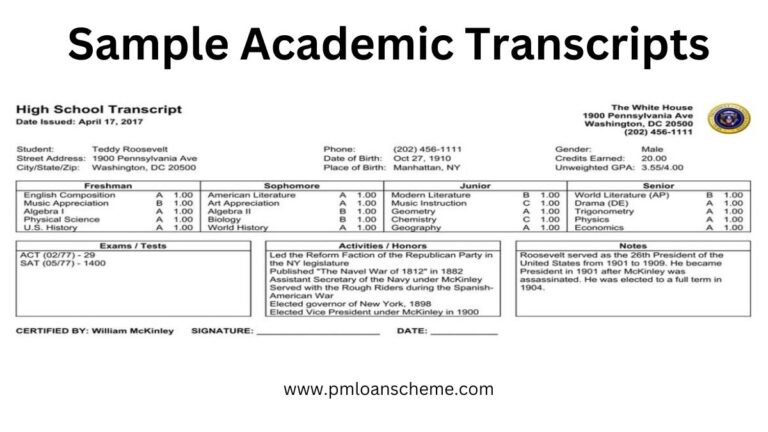ECTS Credits Calculator: The European Credit Transfer and Accumulation System (ECTS) was developed by the European Higher Education Area (EHEA) to simplify student mobility across countries. This system makes it easier for students to transfer their academic credits internationally, ensuring that their coursework and study time are recognized when they move between universities in different countries. ECTS helps streamline credit recognition, making it easier for students to pursue their education abroad without losing progress.
ECTS Credits Calculator
Understanding the ECTS Credit System and How to Calculate Your Credits for Studying Abroad
When it comes to studying in Europe, one term you’ll often encounter is the ECTS—the European Credit Transfer and Accumulation System. Understanding how ECTS credits work and how to calculate them can be essential, especially if you’re planning to pursue higher education abroad. This article explains what ECTS credits are, their importance, and how to calculate them, with a focus on easy, practical steps.

What is the ECTS Credit System?
The ECTS, or European Credit Transfer and Accumulation System, is a standardized system that helps European universities evaluate and compare student achievements and academic progress. One ECTS credit represents about 25-30 hours of total student workload, including classroom learning, assignments, and independent study. Typically, an academic year is worth 60 ECTS credits, breaking down into 30 ECTS per semester for full-time students.
How Does It Work?
The ECTS system is based on the amount of study time and learning outcomes required for different programs. Each ECTS credit represents a certain amount of work completed, whether it’s in lectures, seminars, or independent study. For example:
- 60 ECTS credits typically represent one academic year of study, while 30 ECTS credits cover a semester.
- Bachelor’s programs usually require 180 or 240 ECTS credits (three or four years, respectively).
- Master’s programs often require 90 or 120 ECTS credits, depending on whether it’s a one or two-year program.
Why ECTS Credits Matter for International Students
ECTS credits make it easier for universities across Europe and other parts of the world to assess student qualifications on a similar scale. When you study abroad, ECTS credits allow universities to recognize and transfer credits you earned at other institutions, facilitating mobility within the European Higher Education Area (EHEA) and sometimes beyond. This credit system is especially valuable for exchange students and those enrolled in joint or double degree programs.
How to Calculate ECTS Credits
Calculating ECTS credits to us is generally straightforward. Here’s a quick guide:
- Determine the Total Workload: Check the number of hours you’re expected to commit to each course. For example, if a course requires 150 hours of total study time, this includes lectures, assignments, exams, and self-study.
- Divide by Hours Per ECTS Credit: Since 1 ECTS credit equals approximately 25-30 hours of work, divide the total workload by this number to find the credits. For example:
- If the course requires 150 hours of study, you would divide 150 by 25 (or 30), resulting in 5-6 ECTS credits.
- Verify with Your University: Some universities may have specific guidelines or slight variations in their credit calculations, so it’s always best to confirm your ECTS credit distribution with the institution.
Converting ECTS Credits to UK
If you’re an international student looking to transfer credits to or from an ECTS-based institution, you may need to convert ECTS credits to match other systems like U.S. semester credits or UK credits. Here’s a basic guide:
- ECTS to U.S. Credits: 1 ECTS is usually equivalent to 0.5 U.S. semester credits, though this may vary depending on the institution.
- ECTS to UK Credits: In the UK, 1 ECTS credit often equates to 2 UK credits. So a course with 10 ECTS credits would typically transfer as 20 UK credits.
Benefits of the ECTS Credit System for International Students
- Easy Credit Transfer: Students can move between institutions with greater ease since their achievements are universally recognized.
- Standardized Learning Outcomes: ECTS credits promote consistency in academic expectations, which helps students plan their study path and career goals more effectively.
- Clear Academic Expectations: Knowing the workload in advance gives students a better understanding of their commitments, helping them balance studies with other responsibilities.
- Smooth Credit Transfer: ECTS credits allow students to transfer academic progress easily between institutions, which is essential for students in exchange programs or joint degrees.
- Clear Workload Indicators: The credits reflect the workload associated with each course or module, helping students gauge their study commitments.
- Global Recognition: The ECTS system is used by all universities in the European Higher Education Area (EHEA), which includes 48 countries, and is recognized by many institutions worldwide.
- Preservation of Academic Progress: If students need to pause or switch programs, they can use their ECTS credits to demonstrate completed work, helping them avoid restarting a program entirely.
ECTS Credit System for Studying Abroad
The European Credit Transfer and Accumulation System (ECTS) was developed to help students transfer academic credits across higher education institutions in different countries. This system, widely adopted by European universities, makes it easy to recognize a student’s academic qualifications and study duration across borders. Here’s a comprehensive look at ECTS credits and how they work.
How to Convert ECTS Credits to US Study Hours
The number of study hours equivalent to one ECTS credit varies slightly by country. Here’s a quick overview:
- Austria, Italy, Spain, Ireland: 1 ECTS = 25 hours
- Finland, Sweden: 1 ECTS = 27 hours
- Germany, Belgium: 1 ECTS = 30 hours
- UK: 1 ECTS = 20 hours
While each ECTS credit reflects a general estimate of study time, actual hours may vary depending on the student and the requirements of specific courses or assignments.
Converting ECTS Credits to US
Students often need to convert ECTS credits to other grading systems if they’re studying outside Europe:
- UK System: Generally, 2 UK credits equal 1 ECTS credit, though specific frameworks like CATS (England, Wales, Northern Ireland) and SCQF (Scotland) may be used.
- U.S. System: The conversion is usually 1 U.S. semester credit to 2 ECTS credits. This means a typical full-time U.S. semester load (15 credits) equates to around 30 ECTS credits.
Popular Study Countries Using the ECTS Credit System
The ECTS system is recognized across the EHEA, which includes popular study-abroad destinations like:
- France
- Germany
- Ireland
- Sweden
- Netherlands
- United Kingdom
Calculating ECTS Credits in Germany
Germany, a member of the EHEA, adheres to the ECTS system, with 1 ECTS credit equivalent to approximately 30 study hours. To calculate ECTS credits for a specific subject in Germany:
- Sum the total weekly study hours for the subject.
- Multiply by the number of weeks the subject runs.
- Divide the total by 30 to find the ECTS credits.
Using the ECTS Credits Calculator
An ECTS calculator is a helpful tool for students tracking their study hours across various courses. By inputting hours spent in lectures, assignments, and self-study, students can estimate their total ECTS credits, making it easier to plan international transfers or verify academic progress.
The ECTS system simplifies academic credit transfers and provides international students with a structured way to have their hard work recognized globally.
FAQs About ECTS Credits
Can ECTS Credits be earned outside Europe?
Yes, some universities outside Europe recognize ECTS credits, especially if they have exchange programs with European institutions.
Do all European universities use ECTS credits?
Most do, as it’s the standard credit system in the European Higher Education Area, but it’s best to confirm with individual institutions.
How do ECTS credits affect my GPA?
While ECTS credits do not directly impact GPA, they can influence how your courses are evaluated and converted when transferring to a new institution.
Conclusion
Understanding ECTS credits is essential for any student considering studying abroad in Europe. The ECTS system not only simplifies the credit transfer process but also ensures that students meet a standard workload. By following the guidelines and calculating your credits accurately, you can streamline your study abroad journey, ensuring that your hard work and achievements are recognized globally.
If you’re planning to study abroad, consult your target university about their credit policies, especially if transferring credits is part of your academic journey. With this information, you’ll be well-prepared to navigate the world of international education successfully!


